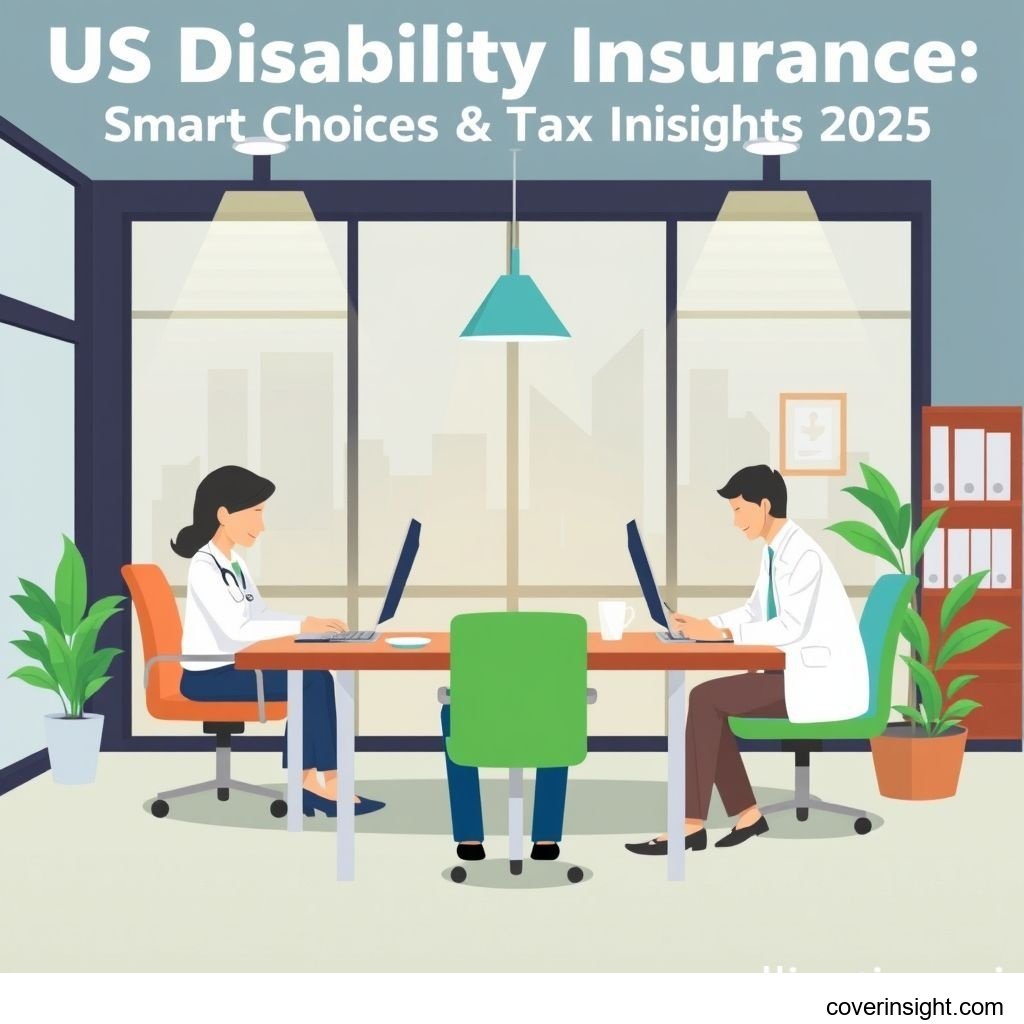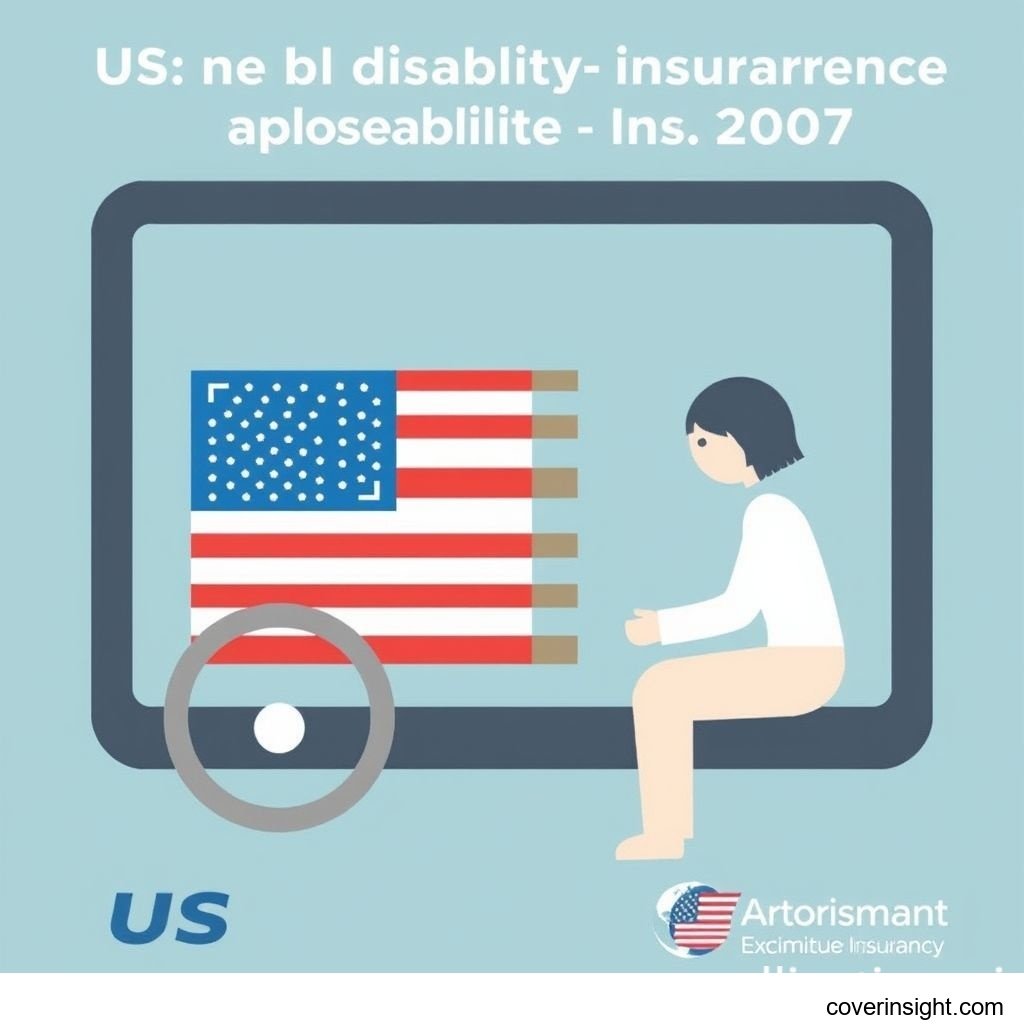Introduction
Navigating the complexities of US disability insurance can feel like a labyrinth, especially when considering the nuances of tax implications on benefits. As we look towards 2025, understanding how your disability benefits are taxed is not just a matter of compliance, but a critical component of smart financial planning. The seemingly straightforward act of receiving a benefit can have significant consequences for your annual tax bill, making it imperative to grasp the ins and outs before you're in a crunch. Proper foresight ensures you can budget effectively and avoid unwelcome surprises from Uncle Sam. For those seeking broader financial guidance, our comprehensive Insurance Resources Global can provide a worldwide perspective on securing your future.
Coverage Details
What’s Included
Disability insurance generally provides a percentage of your income (often 50-70%) if you become unable to work due to illness or injury. Policies typically define "disability" in terms of "own occupation" (can't perform your specific job) or "any occupation" (can't perform any job you're reasonably suited for by education, training, or experience). Coverage usually includes benefits for both short-term (typically 3-6 months) and long-term disabilities (often lasting years, sometimes even until retirement age). Many policies also offer riders for things like cost-of-living adjustments (COLA) to help your benefits keep pace with inflation, partial disability benefits if you can work but at a reduced capacity, and future purchase options allowing you to increase coverage without additional medical underwriting.
Common Exclusions
While comprehensive, disability insurance isn't a cure-all. Common exclusions often include disabilities resulting from pre-existing conditions not properly disclosed or waiting periods, self-inflicted injuries, normal pregnancy (though complications often are covered), acts of war, and injuries sustained while committing a felony. Hazardous activities, such as skydiving or professional racing, might also be excluded or require a special rider. It's crucial to read your policy's fine print thoroughly; what one insurer covers, another might explicitly exclude. For more insights specific to the US market, you can always refer to US Insurance Home.
Cost Analysis
Price Factors
The premium you pay for disability insurance is influenced by several key factors. Your age and health are paramount; younger, healthier individuals typically pay less. Your occupation also plays a significant role – a desk job carries less risk than a construction job, resulting in lower premiums. The benefit amount you choose (how much income you want to replace) and the benefit period (how long you want to receive benefits) directly impact cost. Lastly, the waiting period (the time between becoming disabled and when benefits begin, typically 30, 60, or 90 days) can significantly affect your premium – a longer waiting period usually means lower costs.
Saving Tips
To potentially save on disability insurance, consider a longer waiting period if you have sufficient emergency savings to cover your expenses for a few months. Opting for "any occupation" coverage over "own occupation" can also reduce premiums, though it offers less comprehensive protection. Bundle policies if your insurer offers discounts for multiple lines of coverage. Maintaining a healthy lifestyle can lead to lower rates, as can reviewing your coverage periodically to ensure it still aligns with your financial needs. Always compare quotes from multiple providers to find the most competitive rates for your desired coverage.
FAQs
-
How are disability benefits taxed? The taxability of disability benefits in the US largely depends on who paid the premiums. If you pay your premiums with after-tax dollars, your disability benefits will generally be tax-free. However, if your employer pays the premiums, or if you pay them with pre-tax dollars (e.g., through a cafeteria plan), then the benefits you receive will typically be considered taxable income. This distinction is critical for 2025 financial planning. For instance, if you're a self-employed individual paying your own premiums, your benefits are usually tax-exempt. But for someone whose employer covers the full premium, that monthly disability check could be subject to federal and state income taxes, similar to regular wages.
-
What affects premiums? As mentioned, premiums are primarily affected by your age, health status (including any pre-existing conditions), occupation (risk level), the benefit amount and period you select, and the waiting period before benefits kick in. Riders added to your policy also increase the cost.
-
Is it mandatory? In the United States, private disability insurance is generally not mandatory, unlike auto insurance in most states. However, some states, like California, New York, New Jersey, Rhode Island, and Hawaii, have mandatory short-term disability insurance programs often funded through payroll deductions. For most Americans, securing private disability insurance is a personal financial decision aimed at protecting their income.
-
How to choose? Choosing the right disability insurance involves assessing your financial needs, understanding your occupation's risk level, and comparing various policy features. Consider how much of your income you need to replace, how long you'd need benefits if disabled, and what waiting period you can comfortably manage. It’s wise to consult with a reputable insurance agent or financial advisor who can help you navigate options from different providers. The National Association of Insurance Commissioners offers valuable resources for consumers understanding insurance.
-
Consequences of no coverage? The consequences of not having disability insurance can be severe. Without it, a disabling illness or injury could lead to significant financial hardship, potentially depleting savings, forcing you into debt, or even leading to bankruptcy. The Social Security Administration (SSA) reports that "about 1 in 4 of today’s 20-year-olds will become disabled before reaching age 67." Furthermore, the Council for Disability Awareness notes that the average long-term disability claim lasts 34.6 months. Imagine being unable to work for nearly three years without an income stream. A compelling real-world example is someone like "Sarah from Ohio," a graphic designer who, after a sudden accident left her unable to use her dominant hand, found her monthly bills piling up. Without private disability insurance, she quickly exhausted her modest savings, relying solely on short-term state benefits that barely covered her rent, highlighting the precarious financial position many face without adequate protection. For information on health insurance options that might cover some medical costs related to disability, check out Healthcare.gov. You can also find state-specific resources through your State Insurance Departments.
Author Insight & Experience
Based on my experience living in the US and navigating personal finance, the peace of mind that disability insurance offers is truly priceless. It’s easy to think "it won't happen to me," but the statistics paint a different picture. I've personally seen how a sudden illness or accident can completely derail someone's financial trajectory, turning stable households upside down when income suddenly dries up. Investing in disability insurance isn't just about covering potential losses; it's about safeguarding your entire financial future and giving yourself a safety net so you can focus on recovery, not ruin. It's one of those "dot your i's and cross your t's" financial steps that far too many people overlook until it's too late.
Further reading: Insurance Resources Global
Further reading: US Insurance Home








Comments